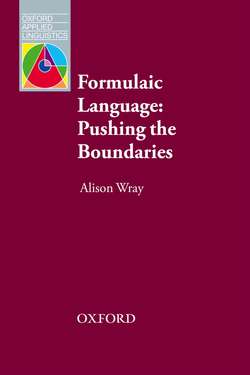Читать книгу Formulaic Language - Alison Wray - Страница 10
На сайте Литреса книга снята с продажи.
PART ONE
Determining boundaries
2
Conceptualizing formulaic language
Definition: the morpheme equivalent unit
ОглавлениеAs the short account above indicates, it is not really possible to say what formulaic language is without adopting a theoretical position of some sort. Yet any theoretical position sidelines others, making it difficult to relate different people’s accounts, unless everyone is explicit about what they mean. The solution adopted here is to coin a new term and provide a clear and specific definition for it. The term used will be ‘morpheme equivalent unit’ (MEU), the definition of which is imbued with the particular theoretical stance laid out in the rest of this chapter. The MEU is defined as:
a word or word string, whether complete or including gaps for inserted variable items, that is processed like a morpheme, that is, without recourse to any form-meaning matching of any sub-parts it may have.
The definition reflects specific claims about the nature and, by implication, provenance of formulaic material in a language – the claims that are presented in the next sections. It is not, therefore, the kind of definition that can really be used to go out and identify examples of formulaic language in real texts, or to find examples suitable for experimental investigations. The relationship between the MEU definition and that of another term used in this book, the ‘formulaic sequence’ (Wray 2002b: 9), is explored more fully in Chapter 8. A working definition of the terms, sufficient to apply in these earlier chapters, is given in a note in Chapter 1.
